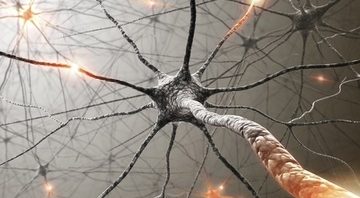What is Lewy Body Dementia?
 Lewy body dementia is characterized by abnormal protein deposits that aggregate in the brain. When Lewy body proteins aggregate, they cause issues that deplete the body of the neurotransmitter dopamine, which leads to the Parkinson’s disease like motor issues.
Lewy body dementia is characterized by abnormal protein deposits that aggregate in the brain. When Lewy body proteins aggregate, they cause issues that deplete the body of the neurotransmitter dopamine, which leads to the Parkinson’s disease like motor issues.
In Lewy body dementia however, these abnormal proteins travel to other areas of the brain including the cerebral cortex. This means that cognition is affected earlier in Lewy body dementia than in Parkinson’s disease because the Lewy bodies affect those areas of the brain sooner than the motor regions.
Also in Lewy body dementia, another neurotransmitter acetylcholine is depleted which causes the problems around perception, thinking, and behavior for these patients. Hallucinations and delusions are common early on in this disease.
 Lewy bodies have been seen in Alzheimer’s disease and in later stages of Parkinson’s disease – leading to Parkinson’s disease dementia (PDD).
Lewy bodies have been seen in Alzheimer’s disease and in later stages of Parkinson’s disease – leading to Parkinson’s disease dementia (PDD).
If motor symptoms occur before cognitive problems, they diagnose the dementia as PDD. If the cognitive symptoms occur first, then it is diagnosed as Lewy body dementia.
Additionally, later stages of both of these diseases can lead to the A-beta plaques and tau tangles seen in Alzheimer’s disease patients.
The Potential New Drug
A drug, nilotinib, which is used to treat leukemia, is being tested on patients with Lewy body dementia and Parkinson’s disease.
In high doses, the drug forces the cancer cells into autophagy and they go through apoptosis. In lower doses, the drug starts the process of autophagy for just long enough for the neurons to clear the toxic proteins out of their cells without causing cell death.
The drug would have to be taken daily, but each of the people in the trial saw cognitive and motor improvements and not just a slower progression of disease. One man actually started the trials in a wheelchair and was able to walk after the trial was over. The drug company donated a life time supply to the trial patients who wanted to continue using it.
The drug is going to go through the next stages of clinical trials in 2016 and was discussed at a large annual neuroscience convention in Chicago this year.
A Promising Outlook to a Devastating Disease: Lewy Body Dementia

This is wonderful. Don’t read too much into the anecdote about the patient who was able to give up the wheelchair, though. LBD is characterized by *extreme* fluctuations. Example: 1.5 years ago my dad lost virtually all motor ability, including the ability to swallow food. In an Alzheimer’s patient this would be an indication of end-stage disease. But after three months of liquids only, my dad suddenly regained the ability to eat. He’s still in a wheelchair but he can walk up to 100 feet. Cognitive fluctuations are equally extreme.
The reports from that clinical trial I read said that all of the patients saw some form of improvement in condition from walking to eating again etc. It was a small study and that was one of the more dramatic changes so I included it in my blog post. I’ve worked in a nursing home’s memory care unit for the past 5 years and we’ve had quite a few people come through with LBD and those experiences are what made me become interested in the neuroscience of dementia. Those residents didn’t see any fluctuations that I hadn’t seen from other residents with other conditions before, but each individual case is going to be different. I’m glad they are continuing with the trials and hopefully see widespread results and improvements! The rats in the preliminary study had their brains analyzed at different times during the treatment and they saw a decrease in Lewy Body’s – so I’m sure they are hoping that is the case in the human trials as well. I’m sorry about your dad, these conditions are so difficult to watch and go through with family.